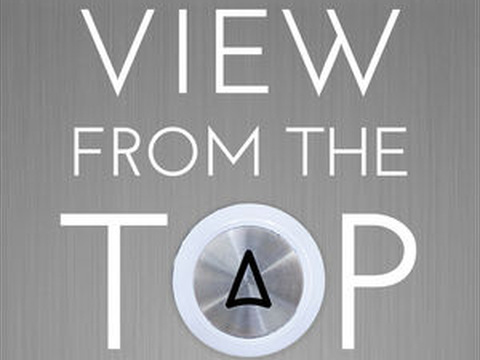
“Never before has confidence in society’s leaders been so low, and the challenges we face so great.” So states Michael Lindsay, author of View from the Top: An inside look at how people in power see and shape the world. How, then, are leaders to succeed in today’s conflicted culture?
Dr. Lindsay, Ph.D., is president of Gordon College in suburban Boston and my dear friend. He is one of the most brilliant men I’ve ever known—a Phi Beta Kappa graduate of Baylor University with graduate degrees in theology from Princeton and Oxford and a Ph.D. in sociology from Princeton. His previous book, Faith in the Halls of Power, was nominated for a Pulitzer Prize. His work has been profiled by The New York Times, The Wall Street Journal, USA Today, CNN and Fox News Channel.
Now he has released View from the Top, coauthored with M. G. Hager. It is perhaps his most ambitious project to date. He interviewed 550 senior leaders over 10 years, including Presidents Jimmy Carter and George H. W. Bush and executives representing White House administrations from Johnson to Obama. He met with hundreds of CEOs and more than 200 nonprofit executives, including the heads of Harvard, Stanford, M.D. Anderson Cancer Center, and the American Red Cross. This is the largest study of its kind ever conducted.
Since I urge you to buy and read View from the Top, I will not review the book in its entirety here. Rather, I’d like to reflect on some of Dr. Lindsay’s insights that most impacted me.
What is a leader?
Let’s begin with definitions. Dr. Lindsay coins the phrase “platinum” leaders and uses it throughout his study. The word serves as an acronym for Public Leaders in America Today and the Inquiry into their Networks, Upbringings, and Motivations.
He describes three qualifications for this rarified position: (1) directing the world’s most significant institutions; (2) maximizing opportunity and catalyzing change; and (3) garnering trust and goodwill within their organization and across the larger culture. According to Lindsay, “the ability to maximize opportunity . . . is perhaps the key indicator of true platinum leaders” (p. 132).
He later defines leadership as “the exercise of influence in the service of a shared cause.” He is convinced that large institutions change the world, for better or for worse, and effective leaders take the helm of such organizations in order to cast a shadow far broader than their own. Lindsay agrees with Hugh Hecho that “lasting cultural change occurs through major organizations” (p. 140).
What prepares a leader?
All leaders begin with potential and opportunity. However, and this is good news for most of us, “it doesn’t really matter what future leaders do before they’re 20” (p. xv).
A privileged childhood is actually a poor indicator of becoming a senior leader. Only nine percent of study participants identified themselves as coming from privilege, while 59 percent came from the middle class. Note, however, that most came from homes with two loving parents. Nearly two-thirds attended schools that are not considered elite institutions. Character, passion and perseverance are the keys to success, not status before adulthood.
Effective leaders typically master a particular skill set, but then they become generalists. Thirty-three percent of study participants were multilingual, compared to 26 percent of the general population. They learn as much as they can about as much of their organization as possible. In this sense, they embrace a liberal arts approach to life and leadership.
And relational intelligence is key—”interpersonally gifted people are at a significant advantage in power” (p. xvii).
How does one become a platinum leader?
The way up the ladder is through networked connections—knowing people who know people. Lindsay describes the White House Fellows as a premier example; those who spend a year in Washington networking with senior government officials find their career accelerated enormously. The Rhodes scholarship and grants and fellowships within specific disciplines help greatly as well. Mentoring chains are indispensible to personal and public progress. Elite networks help aspiring leaders become elite.
How do leaders succeed?
Lindsay identifies three essentials: (1) being productive with time and energy; (2) motivating and managing people well; and (3) building an organizational culture that seeks human flourishing.
Time: two-thirds of the leaders interviewed begin their work day before 8:00, some starting as early as 4:30. Two-thirds sleep six hours a night or less. Their average workweek is 68 hours, with a range from 40 to 106 hours; three-fourths work seven days a week. But most make significant time for reflection and refocusing during the day.
People: effective leaders stay connected with all rungs of the employment ladder. Some manage by walking around; others schedule appointments to meet with representative employees from across the spectrum of the organization. They are consultative leaders, but not consensus-driven. They resist the narrowing of information that comes to those at the top.
Culture: effective leaders focus tirelessly on the flourishing of their company and all within its influence. Some focus specifically on safety, others on customer service, others on employee morale. But all define the vision of the organization and work nonstop to help others grasp and fulfill it together.
All those interviewed faced significant challenges along the way. Lindsay quotes Ralph Waldo Emerson, “To be great is to be misunderstood.” Crisis management entails the preparation phase (before the problem arises), the emergency phase (dealing with the issue), and the adaptive phase (learning from the crisis for the future). While effective leaders must deal with problems, they don’t focus on them. As Senator Tom Daschle notes, “I have a philosophy that the windshield is bigger than the rear-view mirror, which means that you always do most of your best effort looking forward rather than looking back” (92).
Nearly all (86 percent) say they work because they love their jobs. Apple chairman Arthur Levinson speaks for the group: “There’s something deep-seated in my brain that does not allow me to live a casual life” (114).
Ethical leadership is a vital component of Lindsay’s presentation. He identifies two schools of thought: ethics of responsibility (doing what is best for the company, even if it conflicts with personal beliefs) and ethics of conviction (always doing what is personally right without regard for consequences). He advocates a blend—effective leaders know when to act out of each motivation.
Personal character produces great philanthropy. According to Federal Reserve data, the top one percent of earners account for 30 percent of philanthropic giving. Those participating in Lindsay’s study were no exception, the vast majority giving to education, religious causes, community, art, or antipoverty programs (in that order).
Here Lindsay gains a prophetic voice, calling on leaders to make self-giving sacrifices in order to acquire that moral authority which can most transform organizations and society. He has already described the rarified lifestyle most platinum leaders enjoy, with private jets, drivers, multiple homes, and expansive staffs. Now he notes that while some give up hobbies and most sacrifice time for their organization, “I want to advocate for a more fundamental kind of sacrifice: a willingness to trade the privilege that make a leader’s lifestyle more bearable in exchange for more substantial, and nobler, influence” (p. 141).
He notes: “The counterintuitive finding I encountered time and again in this study is simply that leaders gain influence by giving things up” (p. 142). Personal humility and simpler living engender respect and appreciation from others, earning us the right to explain our morals and our faith. Lindsay concludes: “At root, leadership is a relationship of mutual power that advances a collective effort. Moral authority earned through sacrifice is the surest way for a leader to exercise that power for the greater good” (p. 143).
When leaders demonstrate “savvy kindness,” helping others without naiveté but with compassion; act with benevolence to all; and sacrifice what they could claim as their own, “we develop a leadership style grounded in love” (p. 143). And Jesus’ ethic of sacrifice and service becomes our own.
Reading Lindsay’s brilliant and insightful study, I am reminded of a sermon I heard years ago on Jesus’ washing of the disciples’ feet (John 13). The pastor noted: When we stand before God in heaven, he will not ask about our title—but he will examine our towel.











